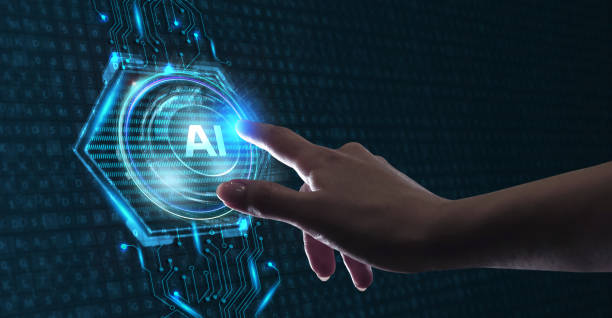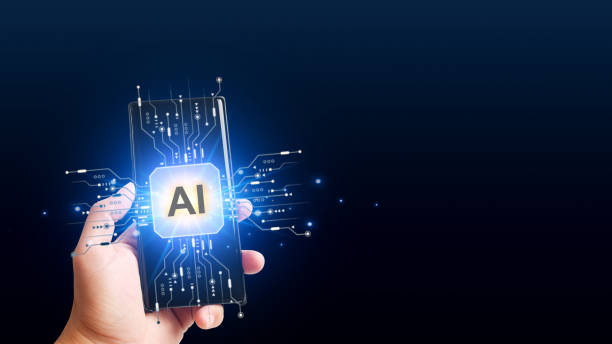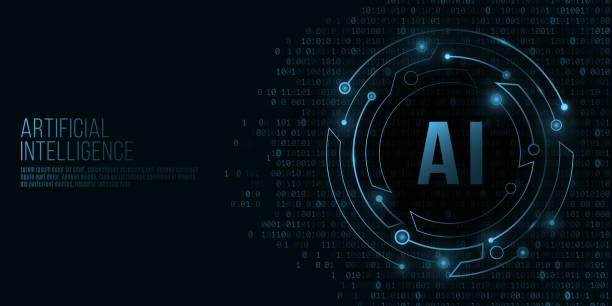What is an Artificial Intelligence Robot and How Does it Work?
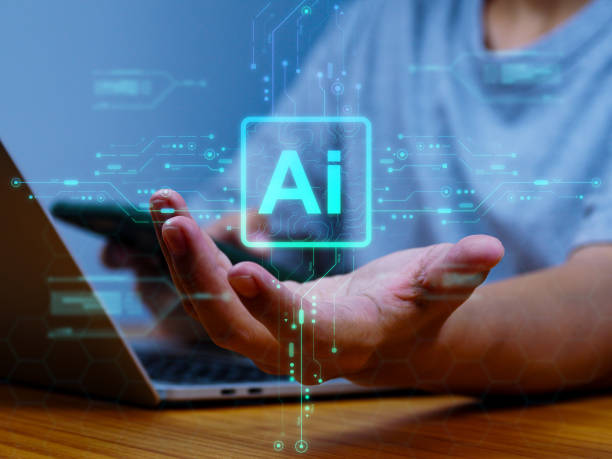
What is an Artificial Intelligence Robot and How Does it Work?
#Artificial Intelligence Robot (AI Robot) is a combination of two main areas: robotics and artificial intelligence.
Simply put, robotics deals with the construction and design of machines that are capable of performing physical tasks, while artificial intelligence is dedicated to the development of systems that can think, learn, and make decisions.
The integration of these two fields leads to the creation of robots that are not only capable of performing physical tasks, but can also do so intelligently and with a degree of independence.
Generally, an AI robot consists of the following components:
- Hardware: Includes mechanical parts, motors, sensors (such as cameras, microphones, touch sensors, etc.) and processors.
- Software: Includes artificial intelligence algorithms, motion control programs, pattern recognition systems, etc.
. - Control System: Is responsible for coordinating between hardware and software and sends the necessary commands to the various components of the robot.
The way an AI robot works is that the sensors first collect information from the environment.
Then, this information is processed by the processor and artificial intelligence algorithms.
Based on this processing, the robot decides what to do and sends the necessary commands to its motors and other components.
For example, a smart vacuum cleaner robot uses its camera and sensors to scan the surrounding environment, identify obstacles, and choose the best path for cleaning.
Finally, using its motors, it moves along the determined path and cleans the surface of the floor.
How much does losing business leads due to an unprofessional website cost you? Solve this problem forever with professional corporate website design by Rasaweb!
✅ Increase the credibility and trust of potential customers
✅ Easier attraction of new business leads
⚡ Get free consultation now!
Applications of Artificial Intelligence Robots in Various Industries

Applications of Artificial Intelligence Robots in Various Industries
#Artificial intelligence robot is no longer a science fiction concept; rather, it has become a tangible reality in various industries.
These robots, with the ability to learn, adapt, and make independent decisions, play an important role in increasing productivity, reducing costs, and improving the quality of products and services.
Here are some of the most important applications of artificial intelligence robots in various industries:
- Manufacturing Industry: Artificial intelligence robots are used in production lines to perform repetitive and dangerous tasks such as welding, painting, packaging, and assembling parts.
These robots can work more accurately and faster than humans and reduce the possibility of errors and accidents. - Medical Industry: Surgical robots, rehabilitation robots, pharmacy robots, and nurse robots are just some examples of the applications of artificial intelligence robots in this industry.
These robots can help doctors perform complex surgeries with high precision, help patients regain their motor skills, and take on the repetitive and time-consuming tasks of nurses. - Logistics and Transportation Industry: Warehouse robots, delivery robots, and self-driving cars are among the applications of artificial intelligence robots in this industry.
These robots can move goods in warehouses faster and more accurately, deliver orders to customers, and drive without human intervention. - Agriculture: Artificial intelligence robots are used in agriculture for spraying, irrigation, harvesting, and identifying pests and diseases.
These robots can consume resources more accurately than traditional methods and improve crop performance. - Customer Service: Chatbots and virtual assistants, using artificial intelligence, can answer customer questions, solve their problems, and provide them with the information they need.
These robots can be available 24 hours a day, 7 days a week, and reduce the workload of customer service staff.
These are just some examples of the growing applications of artificial intelligence robots in various industries.
As technology advances, we expect to see more innovative and widespread applications of these robots in the future.
Advantages and Disadvantages of Using Artificial Intelligence Robots
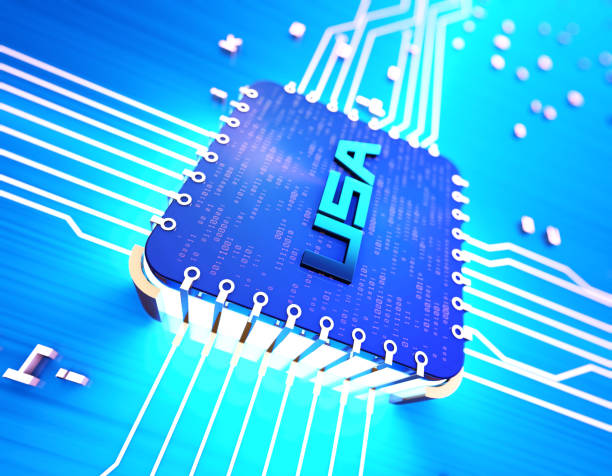
Advantages and Disadvantages of Using Artificial Intelligence Robots
The use of #Artificial Intelligence Robots, like any other technology, has its own advantages and disadvantages.
Understanding these advantages and disadvantages is necessary for making informed decisions about the use of these robots in various industries.
Advantages of Using Artificial Intelligence Robots:
- Increased Productivity: Artificial intelligence robots can work non-stop and with greater speed and accuracy than humans.
- Reduced Costs: Although the initial investment for purchasing and setting up artificial intelligence robots may be high, in the long run they can reduce the costs of manpower, human error, and accidents.
- Improved Quality: Artificial intelligence robots can perform tasks with greater accuracy and consistency and improve the quality of products and services.
- Performing Dangerous Tasks: Artificial intelligence robots can perform tasks in dangerous environments such as mines, nuclear power plants, and areas contaminated with chemicals, without endangering human lives.
- 24/7 Availability: Artificial intelligence robots can be available 24 hours a day, 7 days a week, and provide the required services.
Disadvantages of Using Artificial Intelligence Robots:
- High Initial Cost: Purchasing, setting up, and maintaining artificial intelligence robots can be costly.
- Need for Expertise: Setting up, programming, and maintaining artificial intelligence robots requires expertise and technical knowledge.
- Job Displacement: Automation and the use of artificial intelligence robots can lead to job losses in some industries.
- Ethical Issues: The use of artificial intelligence robots, especially in areas such as military and judicial, raises serious ethical issues.
- Dependency on Technology: Over-reliance on artificial intelligence robots can disrupt the workflow if technical problems occur.
Ultimately, the decision to use #Artificial Intelligence Robots should be made considering the advantages and disadvantages and taking into account the specific conditions of each industry and organization.
| Advantages | Disadvantages |
|---|---|
| Increased Productivity | High Initial Cost |
| Reduced Costs | Need for Expertise |
| Improved Quality | Job Displacement |
| Performing Dangerous Tasks | Ethical Issues |
Challenges Facing the Development of Artificial Intelligence Robots
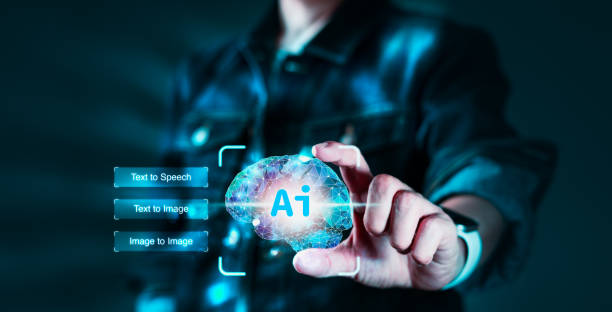
Challenges Facing the Development of Artificial Intelligence Robots
The development of #Artificial Intelligence Robots faces numerous challenges that must be overcome for the advancement and widespread adoption of this technology.
These challenges encompass technical, economic, social, and ethical aspects.
Some of the most important of these challenges include:
- Technical Limitations: Artificial intelligence robots still face limitations in natural language understanding, reasoning, problem-solving, and learning from limited data.
- Cybersecurity: Artificial intelligence robots can be targeted by cyberattacks and have their information stolen or their performance disrupted.
- Privacy: Artificial intelligence robots that use sensors to collect information from the environment can violate individuals’ privacy.
- Accountability: In the event of an error or accident by an artificial intelligence robot, determining responsibility and accountability is difficult.
- Bias and Discrimination: Artificial intelligence algorithms can learn biases present in training data and lead to discrimination in decision-making.
- Development Cost: Developing and training complex artificial intelligence models requires significant investment in hardware, software, and specialized personnel.
- Social Acceptance: Some people are worried and hesitant about using artificial intelligence robots and fear their impact on the job market and society.
To overcome these challenges, there is a need for more research in the field of artificial intelligence, the formulation of appropriate laws and regulations, public education and awareness, and the building of trust among people.
With the joint efforts of researchers, industrialists, and policymakers, these challenges can be addressed, and the high potential of artificial intelligence robots can be harnessed to improve human lives.
Falling behind in competition with large online stores?
Rasaweb will put your business online with a professional e-commerce website design and increase your market share!
✅ Increase brand credibility and customer trust
✅ Easy shopping experience leading to more sales
⚡ Act now to receive a free website design consultation!
What Will the Future of Artificial Intelligence Robots Look Like?

What Will the Future of Artificial Intelligence Robots Look Like?
The future of #Artificial Intelligence Robots is very exciting and full of potential.
With the rapid advancement of technology, it is expected that artificial intelligence robots will play a much more important role in human life in the near future and will be present in all aspects of our lives.
Some of the key trends that will shape the future of artificial intelligence robots include:
- Stronger Artificial Intelligence: In the future, artificial intelligence robots will be able to perform more complex tasks, make better decisions, and interact with humans more naturally.
- More Advanced Sensors: Using more advanced sensors, artificial intelligence robots will be able to understand their surrounding environment more accurately and respond to its changes.
- Longer-Lasting Batteries: Using longer-lasting batteries, artificial intelligence robots will be able to work for longer periods without needing to be recharged.
- Collective Intelligence: In the future, artificial intelligence robots will be able to communicate with each other and collectively solve problems.
- Humanoid Robots: In the future, humanoid robots will have a more natural appearance and movements more similar to humans and can easily work in human environments.
In the future, it is expected that artificial intelligence robots will be used in various fields such as the following:
- Healthcare: Surgical robots, nurse robots, rehabilitation robots, and pharmacy robots
- Education: Teacher robots, educational assistant robots, and academic advisor robots
- Transportation: Self-driving cars, drones, and delivery robots
- Customer Service: Chatbots, virtual assistants, and reception robots
- Smart Home: Home robots, cleaning robots, and gardening robots
However, the development of artificial intelligence robots also comes with challenges that must be addressed.
These challenges include ethical issues, cybersecurity, privacy, and impact on the job market.
By adopting a responsible and forward-looking approach, the high potential of artificial intelligence robots can be harnessed to improve human lives and prevent potential risks.
Artificial intelligence is a growing phenomenon.
The Difference Between Artificial Intelligence Robots and Traditional Robots

The Difference Between Artificial Intelligence Robots and Traditional Robots
Understanding the difference between #Artificial Intelligence Robots and traditional robots is essential for a better understanding of their capabilities and applications.
While both types of robots are machines designed to perform specific tasks, there are fundamental differences in how they operate, their level of intelligence, and their capabilities.
Traditional Robots:
- Fixed Programming: Traditional robots operate based on a predetermined program and are unable to change their behavior in response to environmental changes.
- Lack of Intelligence: These robots lack the ability to learn, reason, and make decisions and only execute predetermined commands.
- Repetitive Tasks: Traditional robots are typically used for performing repetitive and simple tasks in controlled environments.
- Low Sensitivity to the Environment: These robots are not sensitive to changes in their surrounding environment and cannot automatically adapt to new conditions.
Artificial Intelligence Robots:
- Learning and Adaptation: Artificial intelligence robots are capable of learning from data and experiences and can adapt their behavior in response to environmental changes.
- Intelligence: These robots use artificial intelligence algorithms for reasoning, problem-solving, and decision-making.
- Complex Tasks: Artificial intelligence robots can perform complex and diverse tasks in dynamic and unpredictable environments.
- High Sensitivity to the Environment: Using various sensors, these robots fully understand their surrounding environment and can automatically adapt to new conditions.
In short, #Artificial Intelligence Robots have more intelligence, flexibility, and capabilities compared to traditional robots and can be used in a wider range of applications.
Artificial intelligence robots play an effective role considering the development of robotics.
Important Points in Choosing a Suitable Artificial Intelligence Robot

Important Points in Choosing a Suitable Artificial Intelligence Robot
Choosing a suitable #Artificial Intelligence Robot for a specific application requires careful consideration of needs, goals, and existing limitations.
A wrong choice can lead to a waste of time, cost, and resources.
Here are some important points to consider when choosing an artificial intelligence robot:
- Determine Needs and Goals: First and foremost, you need to precisely specify what needs you have and what goals you want to achieve using the artificial intelligence robot.
- Review Capabilities and Features: Different artificial intelligence robots have different capabilities and features.
You should choose a robot that has the capabilities you need. - Consider Limitations: Cost, available space, technical capabilities, and legal restrictions are factors that should be considered when choosing an artificial intelligence robot.
- Research and Compare: Before buying, do thorough research and compare different robots in terms of price, capabilities, features, and user reviews.
- Test and Evaluate: If possible, test the robot before buying and evaluate its performance in real-world conditions.
- After-Sales Service: Ensure that the seller or manufacturer provides adequate after-sales service.
- Security: Make sure the robot is secure.
The artificial intelligence robot should not be at risk of hacking and unauthorized access.
By considering these points, you can choose a suitable #Artificial Intelligence Robot and benefit from its advantages to improve performance and increase productivity.
Artificial intelligence robots have the potential to transform industries.
Ethical Issues Surrounding Artificial Intelligence Robots

Ethical Issues Surrounding Artificial Intelligence Robots
The development and use of #Artificial Intelligence Robots raises important ethical issues that need to be addressed.
These issues include privacy, accountability, bias and discrimination, security, and impact on the job market.
Some of the most important of these issues include:
- Privacy: Artificial intelligence robots that use sensors to collect information from the environment can violate individuals’ privacy.
- Accountability: In the event of an error or accident by an artificial intelligence robot, determining responsibility and accountability is difficult.
- Bias and Discrimination: Artificial intelligence algorithms can learn biases present in training data and lead to discrimination in decision-making.
- Security: Artificial intelligence robots can be targeted by cyberattacks and have their information stolen or their performance disrupted.
- Impact on the Job Market: Automation and the use of artificial intelligence robots can lead to job losses in some industries.
To resolve these ethical issues, there is a need for the formulation of appropriate laws and regulations, public education and awareness, and the building of awareness among researchers, industrialists, and policymakers.
Also, efforts should be made to make artificial intelligence algorithms fairer and more transparent and to prevent bias and discrimination.
Artificial intelligence robots are evolving.
| Ethical Issue | Description |
|---|---|
| Privacy | Collection of information by robots and violation of individuals’ privacy |
| Accountability | Determining responsibility in the event of an error or accident |
| Bias and Discrimination | Creation of discrimination due to learning biases by algorithms |
| Security | Cyberattacks and data theft |
| Impact on the Job Market | Job loss due to automation |
Research shows that 80% of customers trust companies with professional websites more. Does your current website earn that trust?
With Rasaweb’s corporate website design services, solve the problem of customer distrust and a weak online image forever!
✅ Create a professional image and increase customer trust
✅ Attract more sales leads and grow your business
⚡ Get a free consultation
How to Program an Artificial Intelligence Robot

How to Program an Artificial Intelligence Robot
Programming an #Artificial Intelligence Robot is a complex process that requires knowledge and skills in various fields including robotics, artificial intelligence, programming, and mathematics.
In general, this process involves the following steps:
- Define Tasks and Goals: First, you need to precisely specify what tasks the robot should perform and what goals it should achieve.
- Select Appropriate Hardware: Based on the defined tasks and goals, you need to select appropriate hardware for the robot.
This hardware includes mechanical parts, motors, sensors, and processors. - Select Appropriate Software: To program the robot, you need appropriate software.
This software should enable the creation of artificial intelligence algorithms, robot motion control, and sensor data processing. - Create Artificial Intelligence Algorithms: To enable the robot to act intelligently, you need to create appropriate artificial intelligence algorithms for it.
These algorithms can include machine learning algorithms, natural language processing, machine vision, and …
. - Train Artificial Intelligence Models: To ensure that artificial intelligence algorithms function correctly, you need to train their models using appropriate data.
- Test and Evaluate: After programming the robot, you need to test it in real-world conditions and evaluate its performance.
- Optimize: If needed, you need to optimize the robot’s program to improve its performance.
To program an #Artificial Intelligence Robot, you can use various programming languages such as Python, C++, and Java.
Also, there are various tools and libraries to facilitate this process that you can use.
Artificial intelligence robots are a powerful tool.
Safety Tips for Using Artificial Intelligence Robots
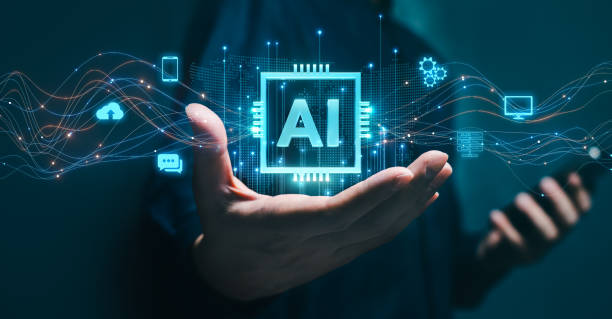
Safety Tips for Using Artificial Intelligence Robots
The use of #Artificial Intelligence Robots, like any other technology, requires adherence to safety tips to prevent accidents and injuries.
These safety tips include the following:
- Training and Awareness: People who work with artificial intelligence robots should receive the necessary training on how to use them correctly and safely.
- Adherence to Instructions: You must carefully follow the safety instructions provided by the robot manufacturer.
- Periodic Inspection: Artificial intelligence robots should be inspected periodically to ensure the integrity of the parts and their proper functioning.
- Use of Safety Equipment: If needed, you should use appropriate safety equipment such as safety glasses, gloves, and protective clothing.
- Prevention of Unauthorized Access: You should prevent unauthorized access to artificial intelligence robots.
- Turning Off When Not in Use: When the robot is not in use, you should turn it off.
- Attention to Safety Warnings: Pay attention to the safety warnings provided by the robot and take the necessary actions.
By following these safety tips, you can prevent accidents and injuries when using #Artificial Intelligence Robots and benefit from this technology safely and effectively.
Artificial intelligence robots can be helpful if used correctly.
Frequently Asked Questions
| Question | Answer |
|---|---|
| What is an artificial intelligence robot? | It is a robot that uses artificial intelligence capabilities to understand the environment, reason, learn, and make decisions to perform complex tasks independently. |
| What is the main difference between a regular robot and an artificial intelligence robot? | Artificial intelligence robots can learn and adapt to their environment, while regular robots usually operate based on fixed and predetermined programming. |
| In what fields are artificial intelligence robots used? | In fields such as industry (production lines), medicine (robotic surgeries), services (customer support, smart vacuum cleaners), exploration (space and underwater), and entertainment. |
| How do artificial intelligence robots learn? | They acquire new skills through machine learning and deep learning algorithms, by analyzing big data and identifying patterns. |
| Can artificial intelligence robots have emotions? | Currently, no. They can identify or simulate emotions, but they do not have the real experience of emotions like humans. |
| What are the most important advantages of using artificial intelligence robots? | Increased productivity, reduced human error, performing dangerous or repetitive tasks, and providing innovative and efficient services. |
| What challenges exist in the development of artificial intelligence robots? | The need for abundant and high-quality data, the complexity of algorithms, ethical issues, cybersecurity, and the high cost of research and development. |
| Are artificial intelligence robots dangerous to humans? | By adhering to safe design principles and ethical regulations, no. Concerns are more related to social and economic impacts, such as changes in the job market. |
| What is an example of an artificial intelligence robot in everyday life? | Smart vacuum cleaners (like Roomba) that automatically map and clean the house, or smart voice assistants (like Siri and Alexa). |
| How is the future of artificial intelligence robots predicted? | They are expected to become smarter, more autonomous, and capable of more complex interaction with humans, and play a more prominent role in industry, medicine, transportation, and everyday life. |
And other services of Rasa Web Advertising Agency in the field of advertising
Intelligent SEO: A new service to increase online growth through optimization of key pages.
Intelligent Custom Software: A combination of creativity and technology to analyze customer behavior by customizing user experience.
Intelligent Marketing Automation: Designed for businesses looking to manage campaigns through marketing automation.
Intelligent Marketplace: An effective tool for user interaction with the help of attractive user interface design.
Intelligent Social Media: A combination of creativity and technology to increase click-through rate by accurately targeting the audience.
And more than hundreds of other services in the field of internet advertising, advertising consulting, and organizational solutions
Internet Advertising | Advertising Strategy | Reportage Advertising
Resources
What is an Artificial Intelligence Robot?
,Everything About Robot Artificial Intelligence
,Artificial Intelligence, The Transformation Factor of Robotics
,Artificial Intelligence Robot
? Are you ready to take your business to the digital space to its peak? Rasaweb Aferin Digital Marketing Agency, with years of experience in providing innovative solutions, including WordPress website design, SEO, and campaign management, is your partner on the path to success. With us, the future of your business is brighter.
📍 Tehran, Mirdamad Street, next to Central Bank, Kazerun South Alley, Ramin Alley No. 6

